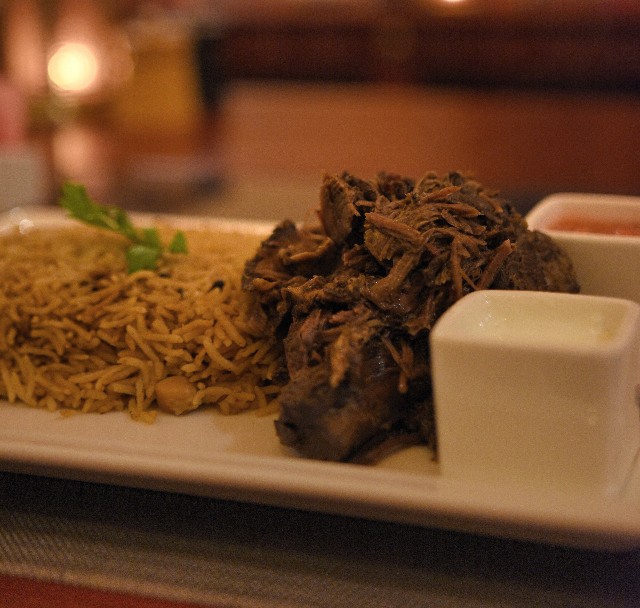
Shiraz, the ancient capital of Persia. This city, where the fragrance of roses drifts through the air, is known as the hometown of Hafez, Iran’s representative poet. However, it is also the birthplace of the traditional dessert “Faloodeh,” said to be the “world’s oldest shaved ice.” Its history dates back to around 500 BC, long before refrigerators and freezers were invented, which is truly remarkable. Today, I’ll share my experience of savoring Faloodeh with its 2,500-year history during my visit to Shiraz on a scorching hot day in Iran.
A Winter Day in Shiraz
I visited Shiraz during the winter season. Even though it was winter in Iran, the daytime was relatively warm and comfortable. While researching Iran before entering the country, I came across information about “the world’s oldest shaved ice,” and as a culinary explorer, I absolutely wanted to try it regardless of the season.
As I strolled through the streets of Shiraz, mosques decorated with colorful mosaic tiles and bustling bazaars caught my eye. While walking near the Pink Mosque (Nasir ol-Molk Mosque), I discovered a shop called “اقامتگاه و کافه رستوران سلطنت بانو” (Eqamatgah va Cafe Restaurant Saltanat Banu). Little did I know at the time that this shop, bustling with locals, would be where I would taste Faloodeh.

Shiraz’s premier attraction, the Pink Mosque
The Tradition and History of Faloodeh
The history of Faloodeh that I researched before visiting Shiraz was truly fascinating.
Faloodeh is believed to be a dessert created about 2,500 years ago during the Achaemenid Persian era. People of that time wanted to eat something cold even during hot summers, so they developed special techniques.
This technique was called “Yakhchal,” an ancient Iranian refrigeration facility. Combined with underground water channels called qanats and applying the principles of evaporative cooling to make ice, this facility was a condensation of ancient wisdom unique to dry climates. It’s truly amazing that in an era without modern refrigeration technology, they devised such methods to make ice and enjoy cold desserts during hot summers.
The original Faloodeh apparently consisted of shaved preserved ice mixed with thin noodle-like strands made from rice flour or wheat flour, flavored with rose water and lemon juice. This must be the prototype of the traditional recipe that continues to this day.
Tasting Faloodeh at a Famous Shop Near the Pink Mosque

Upon entering “اقامتگاه و کافه رستوران سلطنت بانو” (Saltanat Banu) near the Pink Mosque, I was greeted by an interior with impressive traditional decorations. Despite being winter, the shop was filled with local people, creating a lively atmosphere. Looking at the menu, I could order a simple classic-style Faloodeh. I immediately placed my order.

After a while, Faloodeh served in a small glass bowl was brought to me. The appearance was completely different from Japanese shaved ice, with white thin lines visible within the translucent ice. These are the noodle-like strands made from rice flour. Saffron powder was sprinkled on top, and lime juice was also provided. The syrup probably uses rose water, as a fragrant aroma wafted up.

Meeting Faloodeh face to face
When I took my first bite, I was surprised by the strange texture. I could simultaneously enjoy the crunchy sensation of ice and the elasticity of the noodles. And what spread in my mouth was sweetness beyond imagination! I was shocked by the intense sweetness that hit me. The floral rose fragrance perfectly complemented this intense sweetness, and by adding lime juice, it transformed into a fresh, well-balanced flavor.

The indescribable crunchy and chewy texture of the noodles becomes addictive
Another thing that surprised me was Faloodeh’s mysterious characteristic of not melting easily. Due to the extreme sweetness, I ordered tea and savored it slowly, but even after time that would have caused regular shaved ice to lose its shape, it maintained its form well. Probably, the noodle-like rice flour also plays a role in holding the ice together.
The Moment of Tasting Ancient Wisdom
While eating Faloodeh, I felt deeply moved. What I was tasting was a recipe devised by Persians 2,500 years ago and passed down through generations. How wonderful it is to be able to taste the crystallization of ancient wisdom and technology, created to make cold desserts in an era without modern refrigeration technology, in the same place today. Despite visiting during winter, the charm of this dessert had not faded at all.
In modern Iranian households, many people make it using home ice cream makers, but traditional shops still adhere to old-fashioned methods. Faloodeh can also be ordered not only at restaurants or specialty shops but also at cafes. Furthermore, packaged versions were sold at local supermarkets.
Additionally, cafes in cities like Tehran offer creative menu items that fuse traditional Faloodeh with modern smoothies and parfaits. This shows just how deeply this traditional dessert has penetrated into the daily lives of Iranian people.
Experiencing the History of Ice-Making Through Sweets
Among my Iran travel experiences, the Faloodeh experience in Shiraz was particularly memorable. Food is not just something to eat; it’s a mirror that reflects the history, culture, and people’s lives of a place. Through Faloodeh, I was able to touch upon the wisdom of ancient Persians and the creativity and ingenuity of Iranian people who have cultivated a rich food culture even in harsh environments.
If you ever have the opportunity to visit Iran, please make sure to visit Shiraz and taste the world’s oldest shaved ice, “Faloodeh.” Whether in winter or summer, this traditional dessert should be enjoyable.





